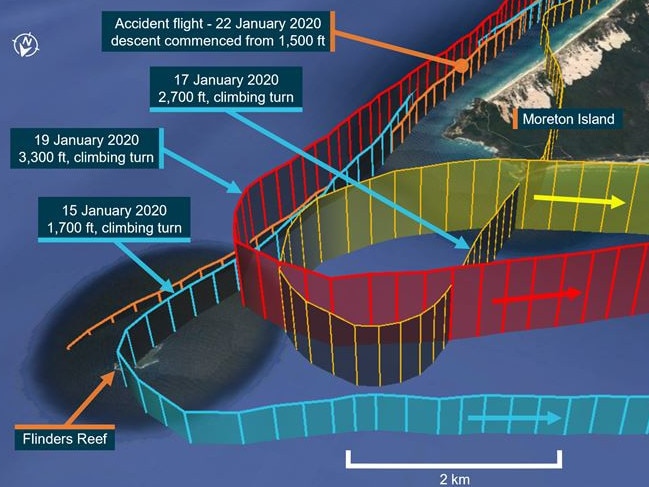Moreton Bay plane crash: Report reveals likely cause of fatal flight
A report into the plane crash that killed a well-known Brisbane couple who departed from Caloundra has shed light on the final moments that led to the tragic event.
Sunshine Coast
Don't miss out on the headlines from Sunshine Coast. Followed categories will be added to My News.
The final report into the plane crash that killed a Brisbane couple off Moreton Island has revealed its likely cause.
Multiple rescue crews including the Australian Maritime Safety Authority, water police and the coast guard scoured Moreton Bay on January 22, 2020 after a Cessna 182 plunged into the ocean.
The light aircraft crash tragically claimed the lives of its pilot Tim Hudson, 70, and his wife Julie, 52, both from Wakerly in Brisbane’s bayside.
Their bodies were never found however the wreckage was located on the ocean floor on January 29 about 45m from the estimated point of impact.
An Australian Transport Safety Bureau report said the couple took off from Caloundra Airport about 3.30pm to sightsee over Moreton Island.

Their projected course was over Flinders Reef however the plane vanished after the pilot made an urgent distress call before losing contact with flight controllers.
“Mayday, mayday, mayday, Whiskey November Romeo,” were the frantic words of the experienced Brisbane pilot about 4.30pm on January 22.
The ATSB’s report showed the aircraft crashed into the water near Moreton Island.
According to the report the pilot had twice descended over water beyond the glide range of a suitable landing area on a previous flight, limiting options for a forced landing in the event of an emergency.
At the time of the accident weather conditions were likely to have contributed to carburettor icing.

On the evidence available, the report said the nature of any in-flight emergency or abnormal situation, and any effect it had on the pilot’s ability to control and configure the aircraft for a ditching on the water could not be established.
Examination of the wreckage indicated the aircraft was likely destroyed by the collision with the water at a moderately high speed and there was no evidence of pre-impact defects or structural failure.
ATSB’s Mike Walker said investigators found the engine’s power had reduced for 100 seconds over the last period of the flight.
The report said the ice build-up within an aircraft engine’s carburettor may result in reduced power output, poor engine performance, rough running and in extreme cases engine failure.

“The likely reduction in power in the last 100 seconds of recorded flight could plausibly have been due to carburettor icing,” Dr Walker observed.
“However, a conclusion regarding the possible influence of carburettor icing on the development of the accident could not be drawn with any certainty.”
During the flight the aircraft maintained course away from suitable landing areas at a speed well above the aircraft’s best glide speed.
Although the reduced power and resulting descent would have been indicated on the aircraft’s instruments, the pilot may have been initially unaware of it because there would have been little or no change in sound and feel, the report said.





